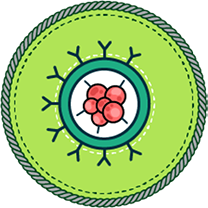
From summer grilling to sharing dinner around the table, moments with family are special and we want as many of them as we can get. That’s why it doesn’t make sense to use dip or chew. It can cut your life short and make us miss out on all the good times.
Check out the facts about smokeless tobacco
and always live tobacco-free.
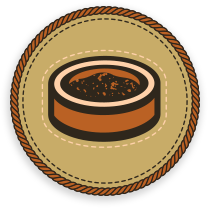
Smokeless tobacco products, like chew and dip, contain nicotine, which is highly addictive. 1
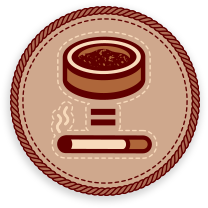
Because smokeless tobacco products can be just as addictive as cigarettes, it makes quitting very difficult. 2
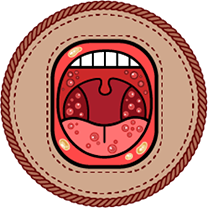
Chemicals in chew absorb into your mouth and can cause painful lesions and sores and gum cancer. 8

Gum disease and tooth loss can both be caused by using smokeless tobacco products. 9
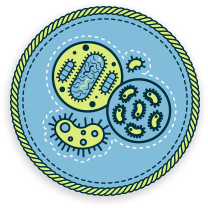
Some smokeless tobacco products can contain fungi, such as yeast and mold, as well as bacteria. 10
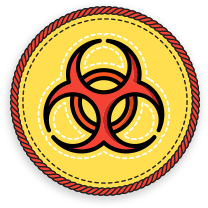
Tobacco products labeled as "natural" or "free of additives" are not a safe option compared to other tobacco products. 11

Smokeless tobacco products contain a toxic mix of 4,000 chemicals, including as many as 30 [or more] chemicals linked to cancer. 12
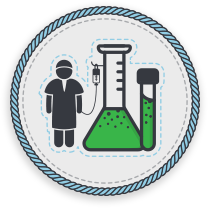
Smokeless tobacco products [contain/have] cancer-causing chemicals such as 13:
- Arsenic.
- Chromium.
- Benzo[a]pyrene
- Nickel
- Cadmium
- Formaldehyde
- Chrysene
- Crotonaldehyde
- Ethyl carbamate (urethane)
- N-Nitrosonornicotine (NNN)
- 4-(Methylnitrosamino)-1-1-butanone (NNK)

-
1Cullen, J. W., Blot, W., Henningfield, J., Boyd, G., Mecklenburg, R., & Massey, M. M.
(1986). Health consequences of using smokeless tobacco: summary of the Advisory Committee's report
to the Surgeon General. Public health reports, 101(4), 355.
Smokeless Tobacco: Health Effects. (2018, January 17). Retrieved from https://www.cdc.gov/tobacco/data_statistics/fact_sheets/smokeless/health_effects/index.htm.
-
2 Cullen, J. W., Blot, W., Henningfield, J., Boyd, G., Mecklenburg, R., & Massey, M. M.
(1986). Health consequences of using smokeless tobacco: summary of the Advisory Committee's report
to the Surgeon General. Public health reports, 101(4), 355.
Harvard Health Publishing. (2011, April). Breaking free from nicotine dependence. Retrieved from https://www.health.harvard.edu/newsletter_article/breaking-free-from-nicotine-dependence.
- 3 National Cancer Institute. (2021, June 23). Tobacco Withdrawal. Retrieved from https://www.cancer.gov/about-cancer/causes-prevention/risk/tobacco/withdrawal-fact-sheet.
- 4 Warburton D. M. (1985). Nicotine and the smoker. Reviews on environmental health, 5(4), 343–390.
- 5 Perkins, K., Jetton, C., & Keenan, J. (2003). Common factors across acute subjective effects of nicotine. Nicotine & Tobacco Research, 5(6), 869–875. doi:10.1080/146222003100016146
- 6 National Cancer Institute. Smokeless Tobacco and Cancer: Questions and Answers. October, 2010.
- 7 U.S. Food and Drug Administration. (2021, March 10). Dip, Chew, Snuff, Snus, and Other Smokeless Tobacco Products: What You Need to Know. [Webpage]. Retrieved May 8, 2023, from https://www.fda.gov/tobacco-products/products-ingredients-components/dip-chew-snuff-snus-smokeless-doesnt-mean-safe#refs
- 8 World Health Organization. IARC Monographs on the Evaluation of Carcinogenic Risks to Humans. Volume 89: Smokeless Tobacco and Some Tobacco-Specific N-Nitrosamines.[PDF–3.18 MB] Lyon (France): World Health Organization, International Agency for Research on Cancer, 2007
- 9 Smokeless Tobacco: Health Effects. (2018, January 17). Retrieved from https://www.cdc.gov/tobacco/data_statistics/fact_sheets/smokeless/health_effects/index.htm.
- 10 Smokeless Tobacco: Health Effects. (2018, January 17). Retrieved from https://www.cdc.gov/tobacco/data_statistics/fact_sheets/smokeless/health_effects/index.htm.
- 11 Pauly, J. L., & Paszkiewicz, G. (2011). Cigarette smoke, bacteria, mold, microbial toxins, and chronic lung inflammation. Journal of oncology, 2011.
- 12 Byron, M. J., Baig, S. A., Moracco, K. E., & Brewer, N. T. (2016). Adolescents' and adults' perceptions of 'natural', 'organic' and 'additive-free' cigarettes, and the required disclaimers. Tobacco control, 25(5), 517–520. doi:10.1136/tobaccocontrol-2015-052560
-
13 Food and Drug Administration. (2019, May 1). Chemicals in Tobacco Products and Your
Health. Retrieved from
https://www.fda.gov/tobacco-products/health-information/chemicals-tobacco-products-and-your-health#references.
Bhisey, R. A. (2012). Chemistry and toxicology of smokeless tobacco. Indian journal of cancer, 49(4), 364.
-
14 Bhisey, R. A. (2012). Chemistry and toxicology of smokeless tobacco. Indian journal of
cancer, 49(4), 364.
Stepanov, I., Villalta, P. W., Knezevich, A., Jensen, J., Hatsukami, D., & Hecht, S. S. (2009). Analysis of 23 polycyclic aromatic hydrocarbons in smokeless tobacco by gas chromatography− mass spectrometry. Chemical research in toxicology, 23(1), 66-73.
Smokeless Tobacco: Health Effects. (2018, January 17). Retrieved from https://www.cdc.gov/tobacco/data_statistics/fact_sheets/smokeless/health_effects/index.htm.
Stepanov, I., Jensen, J., Hatsukami, D., & Hecht, S. S. (2008). New and traditional smokeless tobacco: comparison of toxicant and carcinogen levels. Nicotine & tobacco research : official journal of the Society for Research on Nicotine and Tobacco, 10(12), 1773–1782. doi:10.1080/14622200802443544
NIH (1992, September). Smokeless Tobacco or Health: An International Perspective. Smoking and Tobacco Control Monograph No. 2
U.S. Food and Drug Administration. (2019). Dip, Chew, Snuff, Snus: Smokeless Doesn't Mean Safe. Retrieved May 10, 2023, from https://www.fda.gov/tobacco-products/products-ingredients-components/dip-chew-snuff-snus-smokeless-doesnt-mean-safe#:~:text=When%20you%20chew%20smokeless%20tobacco,and%20arsenic%2C%20are%20also%20released.
about why we choose to live without tobacco products.


